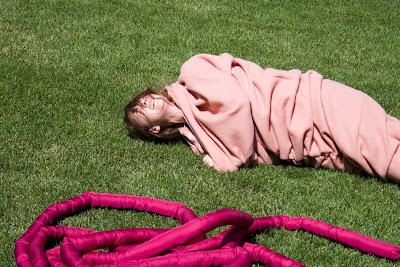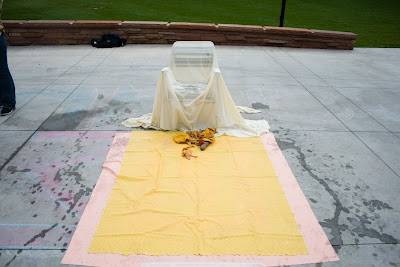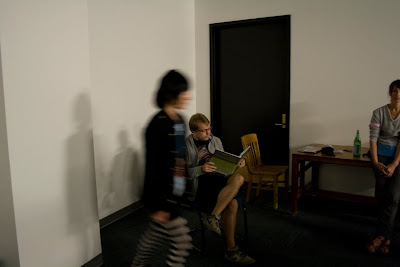 Preacher's Victim by Matthew Whalen
Preacher's Victim by Matthew WhalenIn the piece Preacher’s Victim, I explore the insecurities of my religious and spiritual beliefs and the changes I’ve undergone since I left home. Raised and confirmed Catholic, after leaving for college three years ago, I denounced my religious ties and have been searching for a spiritual home since. The piece consists of a radio-broadcast reading of the prologue to The Satanic Bible, backed by a classical hollywood score from the film The Sea Hawk to give an older broadcast feel. Also accompanied with a scratch film of a cross transforming into a pentacle, the installation explores the vulnerability of a faithless soul, searching for a religion to call home.
Over the past couple weeks, I’ve been listening to a lot of radio, stumbling across radical Evangelical broadcasts preaching to the faithless masses in Colorado. The point of these radio shows is to hail subjects, instilling ideologies in hope of gaining more religious followers. Conflicting ideologies attack our senses everyday and the radio is a classic medium of the 20th century to express religious views to the masses. I feel a vulnerability, but don’t necessarily respond to the radical preachers on the radio. I’m in a point of limbo, where I can fall subject to some hailing faith or ideology. The film shows this transformation, where my past affiliations change over time. On the other hand, the satanic broadcast is the origin of this transformation, taking advantage of the faithless listeners on the radio. I want to work with a larger space, maybe create a living room setting where these religious ideologies seep into the home. The film could project from an older TV and the radio broadcast rhetoric could be more concise. Continuing with this theme of religious vulnerability, I want expand this idea to a larger setting and maybe have a multitude of religious ideologies attack the viewer.

































